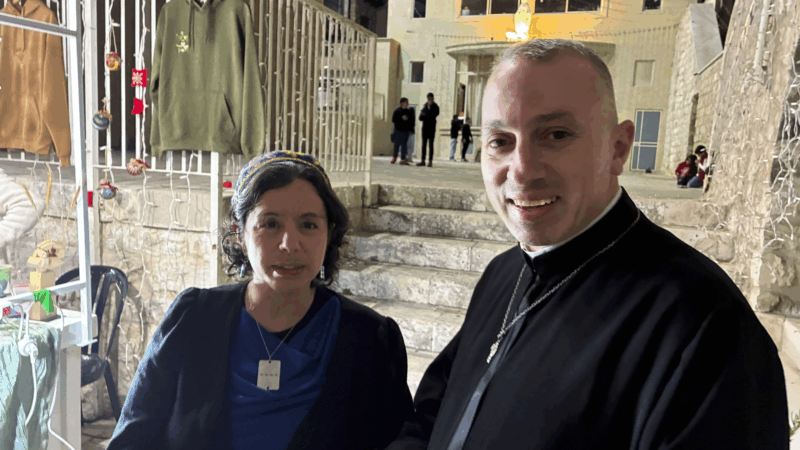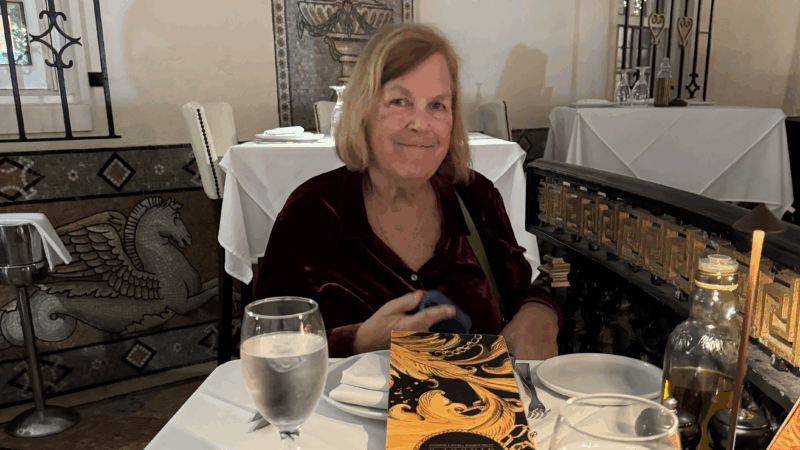Social media is shattering America’s understanding of Charlie Kirk’s death
When Vice President Vance hosted an episode of conservative activist Charlie Kirk’s podcast on Monday, he blamed an “incredibly destructive movement of left-wing extremism” for Kirk’s assasination. That same night, talk show host Jimmy Kimmel said the “MAGA gang” was desperately trying to characterize the killer as “anything other than one of them.” Kimmel was suspended indefinitely for his comments, raising concerns about free speech.
The disparate statements from the conservative vice president and the liberal talk show host revealed a troubling fact: there is a deep schism in how Americans understand the assassination that took place a little more than a week ago.

That gap is being widened by social media. More than half of U.S. adults now get their news sometimes or often from social media platforms, and those platforms are fragmenting how Americans view what’s happening.
American politics has long been home to conspiracies and even fracturings of understanding around events, said Nicole Hemmer, a professor of history at Vanderbilt University.
“What’s new is the speed at which all of this is shared, the ease of access that people have to it, and the algorithmic push,” she said.
“I have seen the most horrible thing and you need to see this too”
Social media disseminated the act of violence that took Charlie Kirk’s life in a matter of minutes.
Kirk had just opened his event at Utah Valley University and many students were filming with their phones when a single shot rang out. Within the hour, videos of his death flooded the web. The images were uploaded and reuploaded by news outlets, independent journalists, influencers and others.
From a forensic perspective, the images built up a remarkably consistent version of a major news event just moments after it had happened. Multiple videos, together with a statement from the university, suggested the sniper had lain prone on the roof of the Lossee Center roughly 135 yards away from his target. The rifle shot rang out at 12:23 local time.
The graphic images of Kirk’s death got millions of views and thousands of repostings on sites including X and Instagram, and that was exactly the point, Hemmer said. For those who were filming, sharing the content is part of processing: “It’s like, ‘I have seen the most horrible thing and you need to see this too, because this is the only way you’re going to grasp what happened.'”
But Hemmer added, the choice of others to reshare is driven by the fact that social media “rewards this kind of extreme content.” Many who re-shared the images are making money and gaining followers off of it, she notes. “That’s just part of the incentive structure of media today,” she said.
Those initial images of the event drive engagement online but they don’t provide any context as to why the shooting happened, said Renee DiResta, an associate research professor at the McCourt School of Public Policy at Georgetown University.
“When something happens, we go to our phone, we start hitting that refresh button… waiting to see the latest bit of information at the top of our feed,” she said. “There is an expectation that new information should be available to us every time we open that app.”
“Social media is spreading fear,” added Darren Linvill, co-director of the Media Forensics Hub at Clemson University. To abate that fear, people are hungry for information. “When we can’t get it, we’re going to fill that void with something.”
Influencers take cues from platforms’ incentives
Enter the influencers. The earliest takes on a platform like X are the most likely to gain traction through algorithmic search, which means they can be monetized and used to grow audiences. “That creates a perverse incentive for people to just be first even if they don’t have any information to add,” said DiResta.
Indeed, prominent influencers were quick to provide theories, or at the very least context, depending on their political lens. Some reminded their followers that Kirk had been in conflict with a far-right group called the Groypers, and suggested the shooter may have been one of them. Others said the shooting itself was evidence of the growing militarization of the left. Later, after additional details emerged, still others said the shooter was motivated by nihilistic video game culture.
“Each of these narratives exists within different communities,” Linvill said. As new details emerged, the communities bent them to their respective narratives.

After 22-year-old Tyler Robinson surrendered to authorities, some began highlighting his upbringing in an apparently conservative household. Others looked for clues in his Halloween costumes. On the right, many pointed to Robinson’s personal relationship with his roommate, who court documents say is a biological male in the process of transitioning genders.
Perhaps nowhere was the fight over meaning as pronounced as with the cryptic messages etched into the bullet cartridges by the shooter. Right-wing influencers quickly cast them as a clear sign of the shooter’s presumed leftist ideology, while others pointed out their roots in extremely online video game culture.
A more complex view emerges
The day after Vance and Kimmel made their comments, a charging document filed by authorities in Utah told its own story of the killer.
Robinson had grown up in a conservative household but had started to lean to the political left, with a specific focus on gay and trans-rights, according to the document. His mother allegedly told law enforcement that those changing views did appear to be a motivating factor behind shooting Kirk, who regularly attacked the trans community online and on his podcast.

“The guy [Charlie Kirk] spreads too much hate,” Robinson said, according to the document.
At the same time, assertions by right-wing influencers that Robinson was part of an alleged larger, violent movement on the political left are, so far, unfounded. Robinson acted alone, according to the charging document, and nobody, not even his roommate and partner, appeared to be aware that he had decided to kill Kirk. Text messages in the charging document also show that he had only decided to conduct the assassination “a bit over a week” before he carried it out, further suggesting he was a lone actor.
Finally, the cryptic messages on the bullet cartridges did indeed seem to be an attempt to gain status online. “The [expletive] messages are mostly a big meme,” Robinson texted to his partner, according to court documents. “If I see ‘notices bulge uwu’ on [Fox News] I might have a stroke.”
Hemmer said that the picture painted by the charging document undercuts both the words of Vance and Kimmel in the past week.
The shooter was not “one of them” as some think Kimmel implied with his joke about the MAGA gang, but equally there is no evidence that he is part of a wider movement of “left-wing extremism”.
(Hemmer also notes, however, a late-night host making a factually dubious statement in a monologue is “not the same as mobilizing the power of the state” against political enemies.)
But nuance fails in online platforms designed to boost and sustain engagement and promote content likely to provoke a reaction from users. Already, social media pundits on the left are questioning whether the texts and interviews in the charging documents are real. Meanwhile, those on the right are agitating to declare left wing activists as terrorists.
Behind it all, Linvill said, the technology is fueling an ancient human instinct: “People want to believe what they want to believe.”
NPR’s Shannon Bond contributed to this report.
In the snow, these salamanders get supercool
Blue spotted salamanders have been seen walking across snow and new research suggests how they get by in the cold.
Timothée Chalamet, a Neil Diamond tribute band and more in theaters for Christmas
Also in theaters this week, Jack Black and Paul Rudd star in a meta reimagining of Anaconda, Amanda Seyfried in a Shaker origin story, and Ralph Fiennes plays a World War I-era choirmaster.
When porch pirates steal medicine instead of holiday gifts
Mail theft can happen around the holidays, but sometimes, instead of getting a new iPad, the thief swipes a mail order medicine. Here's what to do about it.
U.S. and Ukraine reach consensus on key issues aimed at ending the war
The United States and Ukraine have reached a consensus on several critical issues, but sensitive issues around territorial control in Ukraine's eastern industrial heartland remain unresolved.
Despite Vatican-Israel tensions, Catholics and Jews work to build trust in Haifa
Religious leaders started getting together after Oct. 7, 2023, in the hope of preventing a repeat of Arab-Jewish violence that erupted after a previous conflict in Gaza two years earlier.
The strangers who guided her home — and returned with Christmas dinner
Mary Klein had just moved to a new city when she got lost. A couple stopped to help and guided her home. They returned the next day with Christmas dinner.









